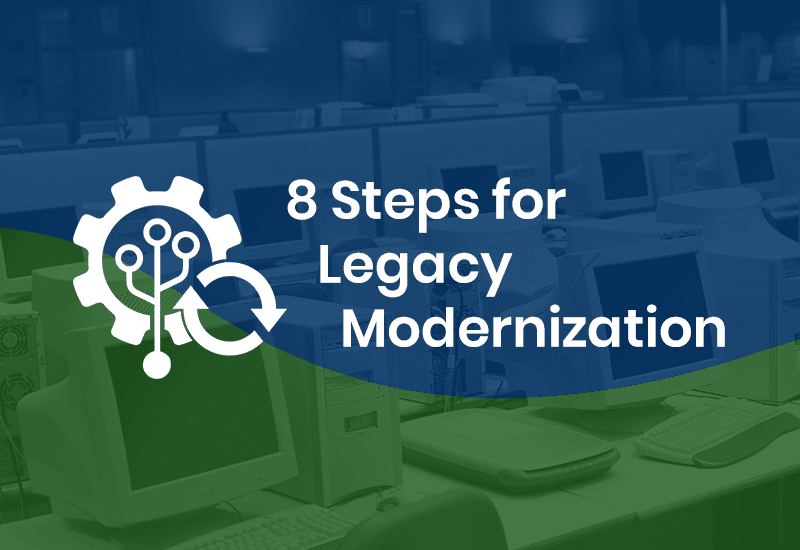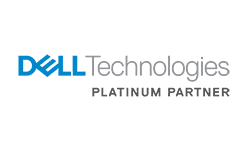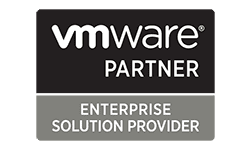8 Steps for Small Business Legacy Modernization to Tackle Technical Debt
Leverage Cloud Services and Modern IT Solutions for Legacy Modernization
Kelsey Young, Copywriter and Media Specialist
5 Min Read

Small businesses often face significant challenges in maintaining and updating their IT infrastructure. One of the most pressing issues is technical debt.
To remain competitive and efficient, it’s crucial for small businesses to engage in legacy modernization. This process involves updating and improving outdated systems, allowing businesses to leverage modern technologies like cloud services and advanced applications.
Technical debt is a term used to describe the additional work and future costs that result from choosing a quicker, less optimal solution to meet immediate needs. While this approach can provide short-term benefits, it often leads to long-term problems, including increased maintenance costs, reduced system efficiency, and limited scalability. Technical debt accumulates over time, making it increasingly difficult for businesses to innovate and adapt to new technological advancements.
The Importance of Legacy Modernization
Legacy modernization is the process of updating and improving old software and hardware systems to meet current business needs. This can involve rewriting code, integrating modern technologies, or completely replacing outdated systems. The primary goal is to reduce technical debt, improve system performance, and ensure that the business can continue to grow and adapt in a rapidly changing technological environment.
For small businesses, legacy modernization is particularly important. Unlike larger enterprises, small businesses often have limited resources and need to maximize the efficiency and effectiveness of their IT investments. Modernizing legacy systems can provide a significant competitive advantage by enabling small businesses to streamline operations, enhance customer experiences, and reduce costs.
Benefits of Legacy Modernization for Small Businesses
- Improved Efficiency: Modernized systems are typically more efficient, leading to faster processing times, reduced downtime, and lower maintenance costs.
- Enhanced Customer Experience: Modern applications and technologies can improve customer interactions and satisfaction by providing faster, more reliable services.
- Increased Scalability: Modern systems are more scalable, allowing small businesses to grow and adapt to changing market conditions without significant additional investments.
- Better Security: Up-to-date systems are less vulnerable to security breaches, protecting sensitive business and customer data.
- Cost Savings: While modernization requires an initial investment, the long-term cost savings from reduced maintenance and improved efficiency can be substantial.
8 Steps for Small Businesses to Modernize Legacy Systems
1. Assess Current Systems and Identify Technical Debt
The first step in any modernization effort is to assess existing systems. Identify which applications and hardware are outdated and evaluate the extent of the technical debt. This assessment should include an analysis of system performance, maintenance costs, security vulnerabilities, and any limitations that impact business operations.
2. Prioritize Modernization Projects
Not all legacy systems need to be modernized at once. Prioritize projects based on their impact on business operations, costs, and potential benefits. Focus on critical systems that are causing the most significant issues or those that offer the greatest return on investment when modernized.
3. Develop a Modernization Strategy
Develop a comprehensive strategy that outlines the goals, timelines, and resources required for modernization. This strategy should include a detailed plan for each project, including steps for data migration, system integration, and testing. Consider leveraging agile methodologies to ensure flexibility and adaptability throughout the process.
4. Leverage Cloud Services
Cloud services offer numerous benefits for small businesses looking to modernize their legacy systems. By migrating applications and data to the cloud, businesses can reduce hardware costs, improve scalability, and enhance security. Cloud services also provide access to advanced tools and technologies that can streamline operations and drive innovation.
5. Adopt Modern Development Practices
Modern development practices, such as DevOps and continuous integration/continuous deployment (CI/CD), can significantly improve the efficiency and effectiveness of modernization efforts. These practices promote collaboration between development and operations teams, automate repetitive tasks, and enable faster, more reliable software releases.
6. Invest in Training and Support
Successful legacy modernization requires a skilled and knowledgeable workforce. Invest in training and support to ensure that your team has the skills needed to manage modernized systems and leverage modern technologies. Consider partnering with IT consultants or service providers to provide additional expertise and support.
7. Implement Robust Security Measures
Modernizing legacy systems presents an opportunity to enhance security measures. Implement robust security protocols, such as multi-factor authentication, encryption, and regular security audits, to protect your data and systems from cyber threats.
8. Monitor and Evaluate Progress
Regularly monitor and evaluate the progress of your modernization projects. Use key performance indicators (KPIs) to measure the effectiveness of modernized systems and identify areas for improvement. Continuous evaluation and optimization will ensure that your IT infrastructure remains up-to-date and aligned with business goals.
Why Engage in Legacy Modernization?
Technical debt and outdated systems can significantly hinder the growth and efficiency of small businesses. By engaging in legacy modernization, small businesses can reduce technical debt, improve system performance, and leverage modern technologies to stay competitive. With a strategic approach that includes assessing current systems, prioritizing projects, leveraging cloud services, adopting modern development practices, investing in training and support, implementing robust security measures, and continuously monitoring progress, small businesses can successfully modernize their IT infrastructure and achieve sustainable growth. Embrace the journey of small business legacy modernization today and pave the way for a more efficient, innovative, and secure future.
By focusing on these steps, small businesses can tackle the challenges of technical debt and legacy modernization, ensuring their systems are robust, secure, and capable of supporting future growth. Modernize your applications and leverage cloud services to stay ahead in the competitive landscape, transforming potential obstacles into opportunities for innovation and success.
Choose GDC as Your Modernization Partner
With almost 30 years of experience, GDC is your premier IT service provider. We provide technology solutions that empower businesses to thrive. We are committed to exceptional customer service and quality solutions that contribute to our client’s success.
At GDC, we understand the importance of staying ahead of IT issues. That is why we offer innovative solutions to our clients. With our comprehensive expertise and a broad array of IT services, we are committed to helping your business thrive in the continually evolving digital landscape.




